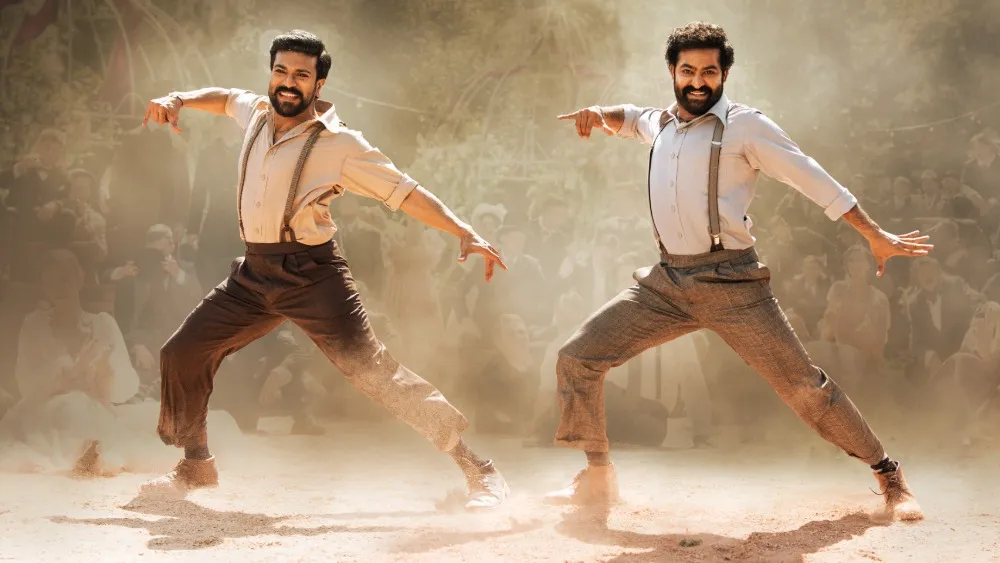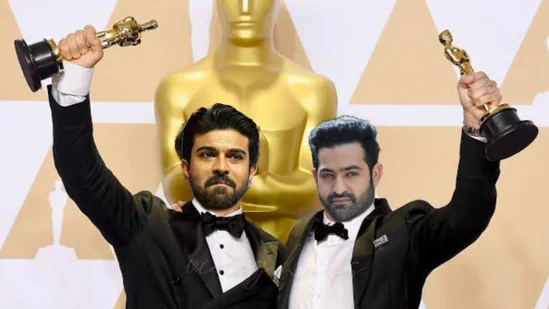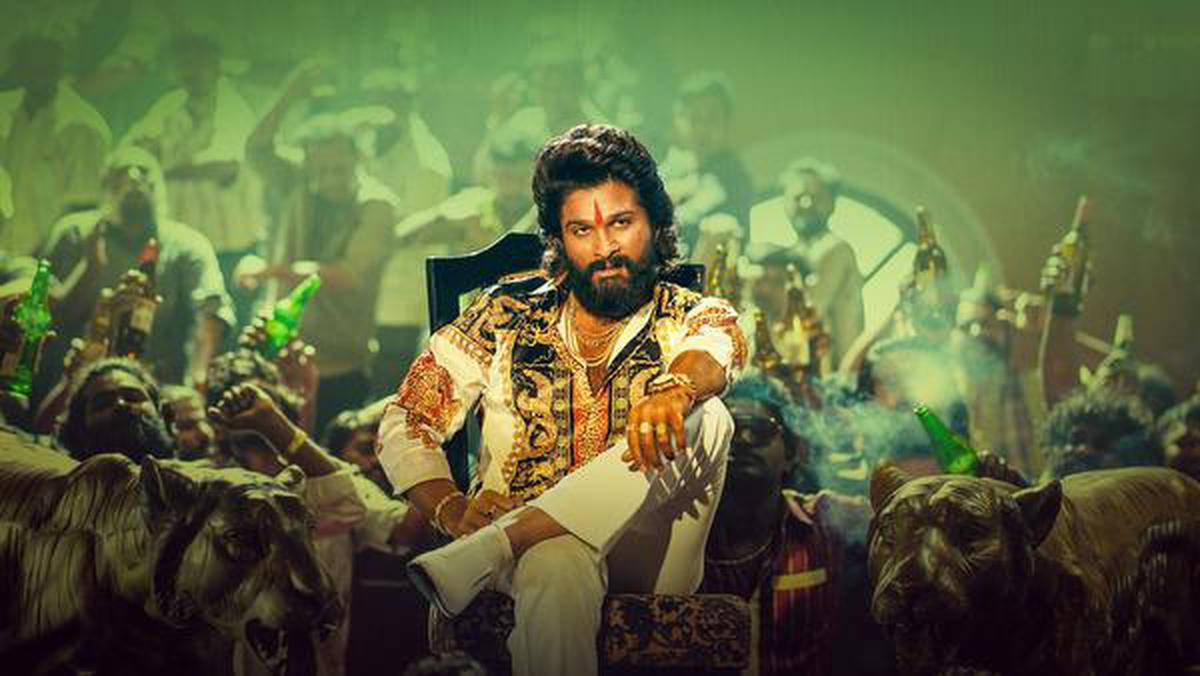Bollywood’s Struggle for Relevance in the Streaming Age

The Rise of South Indian Cinema and the RRR Phenomenon.
For nearly a century, Bollywood has been the heartbeat of India’s entertainment industry—a cultural powerhouse that shaped music, fashion, and storytelling for over a billion people. But today, something has shifted.
Despite producing over 1,500 films a year—more than Hollywood—Bollywood is struggling to hold onto its once-unshakable dominance. The numbers tell the story:
• In 2022, Bollywood films accounted for just 33% of total box office revenue in India—down from 44% in 2019. Meanwhile, South Indian films (Telugu, Tamil, and Kannada cinema) took a 48% share, with mega-hits like RRR, KGF: Chapter 2, and Ponniyin Selvan outperforming Bollywood’s biggest releases.
• The failure rate of Bollywood films is alarming: nearly 80% of Hindi films released in 2023 failed to recover their costs.
• Streaming is rewriting the rules. Disney+ Hotstar dominates India’s streaming market with 52 million subscribers, while Netflix and Amazon Prime Video continue to grow aggressively.
Is Bollywood losing its cultural grip? Or is this just a natural evolution of storytelling and audience preferences?
What’s Really Happening?
1. The Shift from Theaters to Streaming
The traditional Bollywood formula—three-hour musical epics with predictable story arcs—isn’t working as well in an era of binge-worthy content.
• A 2023 study by Ormax Media found that 69% of Indian urban audiences now prefer watching films on streaming platforms over theaters.
• Films like Scam 1992, Paatal Lok, and Delhi Crime (which won India’s first-ever International Emmy) have shown that audiences crave complex, grounded narratives that Bollywood often sidelines.

2. The Death of the Bollywood Star System
For decades, Bollywood’s power lay in its superstars—Shah Rukh Khan, Salman Khan, Aamir Khan—who guaranteed box office gold. But audiences are increasingly rejecting formulaic “star-driven” films.
• Laal Singh Chaddha (Aamir Khan’s big-ticket film) flopped despite a $22 million budget, while Pathaan (Shah Rukh Khan’s comeback) broke records—showing that audiences now demand fresh, high-quality storytelling rather than just star power.
• Meanwhile, actors from the South—Vijay Sethupathi, Fahadh Faasil, and Allu Arjun—are commanding pan-Indian fanbases by delivering more diverse, compelling performances.
3. The South Indian Film Takeover & the RRR Effect
Telugu, Tamil, and Kannada cinema have taken center stage. In 2022, films like RRR, KGF: Chapter 2, and Vikram outperformed nearly every Bollywood release. But no film better illustrates this shift than SS Rajamouli’s RRR.
Case Study: How RRR Became a Global Phenomenon

RRR, a Telugu-language epic directed by SS Rajamouli, didn’t just redefine Indian cinema—it redefined global perceptions of it. The film shattered multiple barriers:
• Box Office Juggernaut: Grossing over ₹1,200 crore ($150M) worldwide, RRR became one of India’s highest-grossing films ever.
• Global Recognition: Unlike typical Bollywood blockbusters, RRR reached mainstream Western audiences. It was celebrated at the Critics’ Choice Awards, won an Oscar for Best Original Song (Naatu Naatu), and was embraced by Hollywood A-listers like James Cameron and Steven Spielberg.
• Crossover Appeal: Unlike Bollywood’s formulaic love stories, RRR delivered a high-octane, mythological action film that resonated with both Indian and global audiences.
• Streaming Power: Its release on Netflix turned it into an international sensation, introducing Telugu cinema to millions outside India.
Why does RRR matter? Because it highlights Bollywood’s biggest weakness—its failure to evolve. South Indian cinema has embraced bigger budgets, better visual effects, innovative storytelling, and pan-Indian appeal, while Bollywood has struggled to move past outdated formulas.
4. The New Indian Audience: A Generation Reshaping Indian Cinema
India’s younger generation—Gen Z and Millennials—is redefining entertainment consumption. Their preferences are not just shifting away from Bollywood but evolving toward a more diverse, globalized mix of storytelling. Unlike previous generations who grew up idolizing Bollywood superstars and waiting for Friday theatrical releases, today’s audiences engage with content in an entirely different way.

1. Bollywood vs. the Global Content Boom
The internet has opened doors to Korean dramas, Hollywood blockbusters, Japanese anime, and even Turkish and Spanish series, giving young Indian audiences access to high-quality storytelling beyond Bollywood’s traditional formulas.
• A 2023 RedSeer report found that 58% of young Indians consume more non-Bollywood content than Hindi films.
• The growing popularity of K-dramas in India led to Netflix reporting a 370% increase in K-drama viewership among Indian audiences in 2021.
• Hollywood films now routinely outperform Bollywood films at Indian theaters. Avatar: The Way of Water earned ₹385 crore in India, while several big-budget Bollywood films in 2022 failed to break ₹100 crore.
This shift isn’t just about preference—it’s about quality. Hollywood, South Korean, and even South Indian films invest in superior VFX, complex narratives, and emotionally resonant characters, setting a new benchmark that Bollywood struggles to match.
2. Meme Culture and Digital Influence

Today’s Indian audience doesn’t just consume content—they interact with it. Memes, social media trends, and digital engagement drive a film’s success far more than traditional marketing.
• The massive global success of RRR was fueled by its virality. The “Naatu Naatu” song challenge spread across TikTok and Instagram, leading to millions of user-generated content pieces that built global hype.
• Bollywood films that fail to engage meme culture often fade quickly. Brahmāstra, despite its huge budget and star cast, struggled with digital engagement, while South Indian films like Pushpa leveraged meme-worthy dialogues and mass appeal moments to sustain buzz.
• Even Hollywood recognizes the power of meme culture. Barbie and Oppenheimer capitalized on social media narratives, fueling record-breaking ticket sales in India.
For Bollywood to survive, it must integrate digital-first strategies that speak the language of meme culture, short-form content, and viral engagement rather than relying on traditional star power.
3. Gaming, Anime, and Interactive Media Are Winning
Gen Z and Millennials in India are not just watching films—they are gaming, consuming anime, and engaging with interactive content. This shift means Bollywood is competing not just with other film industries, but with entirely new entertainment ecosystems.
• India is one of the fastest-growing gaming markets, with over 421 million online gamers. Films that don’t cater to this audience risk irrelevance.
• Anime conventions, cosplay culture, and Japanese animation are growing at an exponential rate in India. Crunchyroll, a major anime streaming platform, has seen Indian subscriptions skyrocket.
• Interactive storytelling, such as Netflix’s Bandersnatch, is reshaping audience expectations for immersive experiences.
Bollywood’s traditional, linear storytelling model is being challenged. Younger audiences are drawn to dynamic, unpredictable content, making the old-school three-hour musical format feel outdated.
5. What’s Next for Bollywood?.
The industry stands at a crossroads. Can it reinvent itself, or will it continue losing relevance? Some signs of change are emerging:
• Genre experimentation: Films like Andhadhun, Drishyam 2, and Article 15 prove that Bollywood can succeed by breaking away from formula.
• Cross-industry collaboration: More South-Bollywood partnerships (Jawan, starring SRK and Nayanthara) hint at a more unified Indian cinema.
• Streaming-first films: Bollywood must embrace streaming platforms as a primary, not secondary, storytelling medium.
But the biggest takeaway? South Indian cinema is now leading India’s global film moment. With films like RRR dominating Hollywood conversations, Bollywood must catch up or risk becoming a relic of the past.
The next decade will decide whether Bollywood remains India’s cultural epicenter—or becomes just another chapter in the country’s entertainment history.